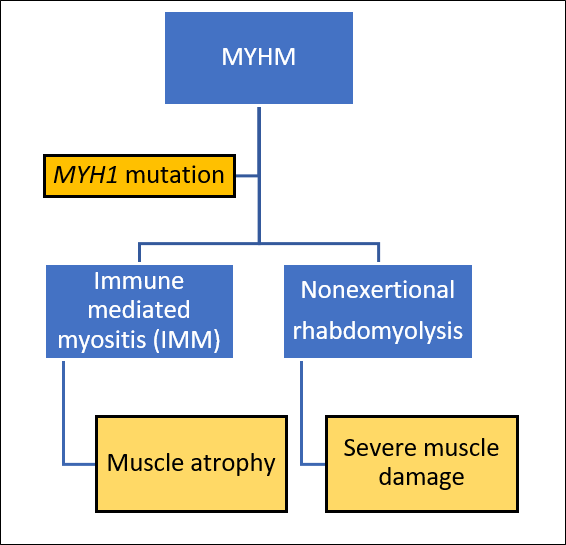
New Name for Immune-Mediated Myositis (IMM) Test
Test for Immune-Mediated Myositis (IMM) Risk Factor Gets an Updated Name: Myosin-Heavy Chain Myopathy (MYHM)
What’s in a name?
When it comes to the accurate description of clinical conditions, their causal mechanisms, and enhancing the understanding of genetic conditions, quite a lot.
In Quarter Horses and related breeds, an autoimmune condition termed immune-mediated myositis (IMM) can cause severe, rapid muscle loss. IMM is characterized by stiffness, weakness, and rapidly occurring muscle loss (atrophy), with inflammatory cells, particularly lymphocytes, present in muscle fibers and surrounding blood vessels and preferentially targeting the gluteal (hindquarter) and back muscles. A second syndrome, termed non-exertional rhabdomyolysis or “tying-up not associated with exercise”, presents with some similar symptoms, but affected horses may or may not have muscle atrophy, and there is often no evidence of lymphocytes in the muscles. While IMM and non-exertional rhabdomyolysis have two distinct clinical disease presentations, risk for both have been associated with the same genetic variant in the Myosin Heavy Chain 1 (MYH1) gene.

To more accurately reflect the genetic mechanism that underpins both clinical syndromes, the name of the VGL’s DNA test has been updated from immune-mediated myositis (IMM) to myosin-heavy chain myopathy (MYHM). With the help of the scientists Drs. Carrie Finno and Stephanie Valberg, who discovered the connection between IMM, non-exertional rhabdomyolysis, and MYH1, the Additional Details section of our website has also been updated to further clarify and provide enhanced educational resources on the MYHM test.
We expect this name change may take some getting used to, but we hope that the new name and updated information will help resolve confusion about the relationship between IMM and non-exertional rhabdomyolysis and will provide horse owners with usable information about this genetic test.
Dr. Finno and Dr. Valberg are continuing to study this myosin-heavy chain myopathy, and the UC Davis VGL will update our website content to reflect any additional findings when more is known.



